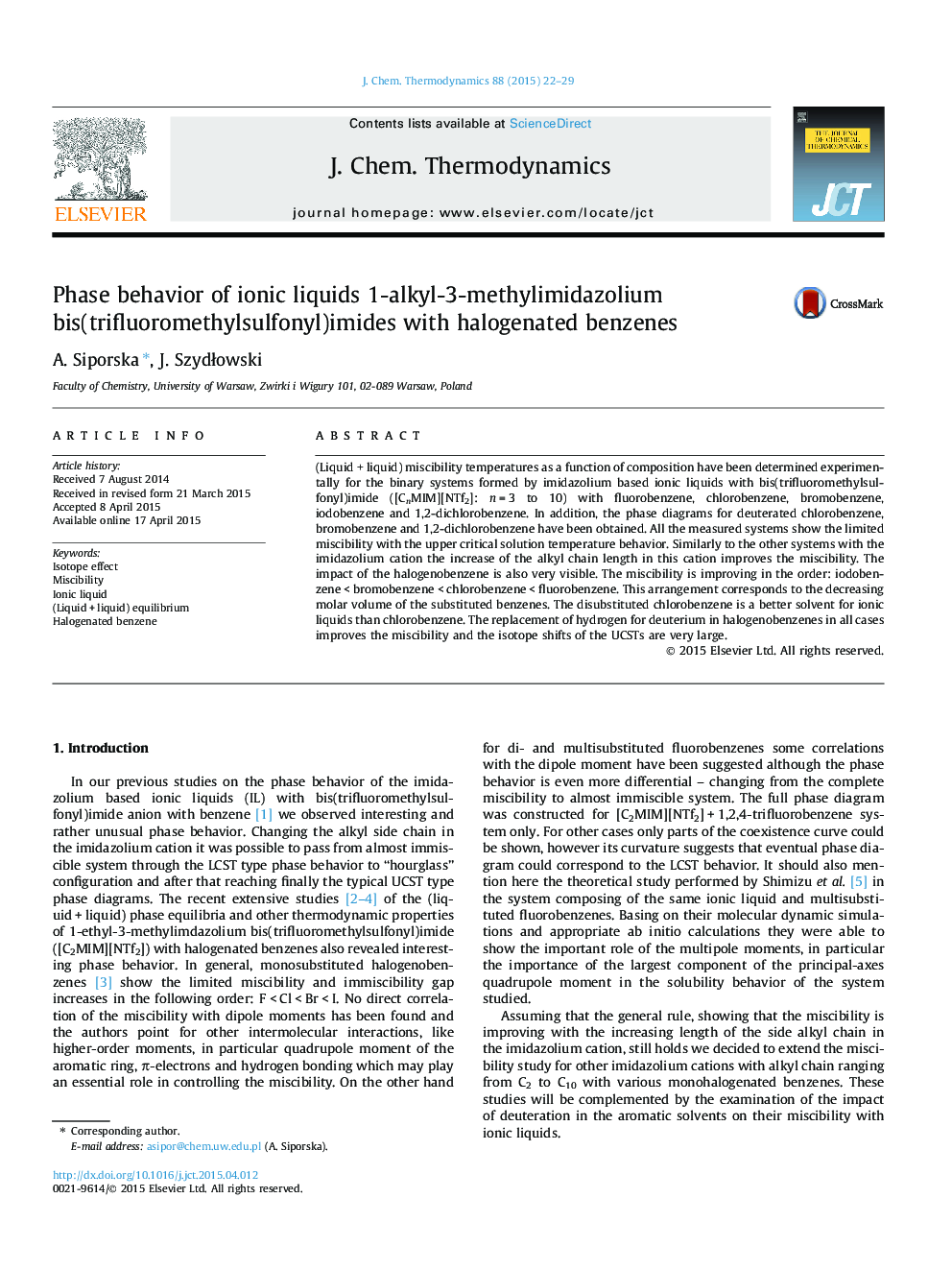| Article ID | Journal | Published Year | Pages | File Type |
|---|---|---|---|---|
| 215167 | The Journal of Chemical Thermodynamics | 2015 | 8 Pages |
•CnMIM[NTf2]/halogenobenzenes systems show UCST behavior.•The miscibility decreases in the order: FB > ClB > BB > IB.•The isotope shifts of the UCSTs are very large.•The deuteration shifts the phase diagrams remarkably downwards.
(Liquid + liquid) miscibility temperatures as a function of composition have been determined experimentally for the binary systems formed by imidazolium based ionic liquids with bis(trifluoromethylsulfonyl)imide ([CnMIM][NTf2]: n = 3 to 10) with fluorobenzene, chlorobenzene, bromobenzene, iodobenzene and 1,2-dichlorobenzene. In addition, the phase diagrams for deuterated chlorobenzene, bromobenzene and 1,2-dichlorobenzene have been obtained. All the measured systems show the limited miscibility with the upper critical solution temperature behavior. Similarly to the other systems with the imidazolium cation the increase of the alkyl chain length in this cation improves the miscibility. The impact of the halogenobenzene is also very visible. The miscibility is improving in the order: iodobenzene < bromobenzene < chlorobenzene < fluorobenzene. This arrangement corresponds to the decreasing molar volume of the substituted benzenes. The disubstituted chlorobenzene is a better solvent for ionic liquids than chlorobenzene. The replacement of hydrogen for deuterium in halogenobenzenes in all cases improves the miscibility and the isotope shifts of the UCSTs are very large.
